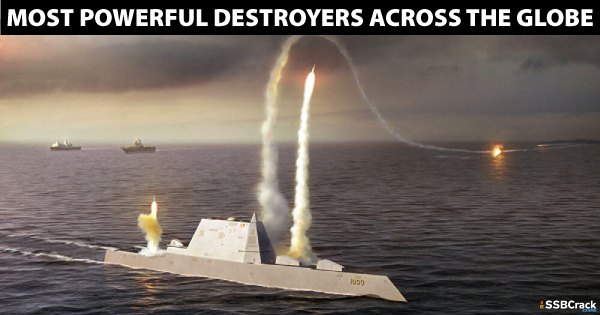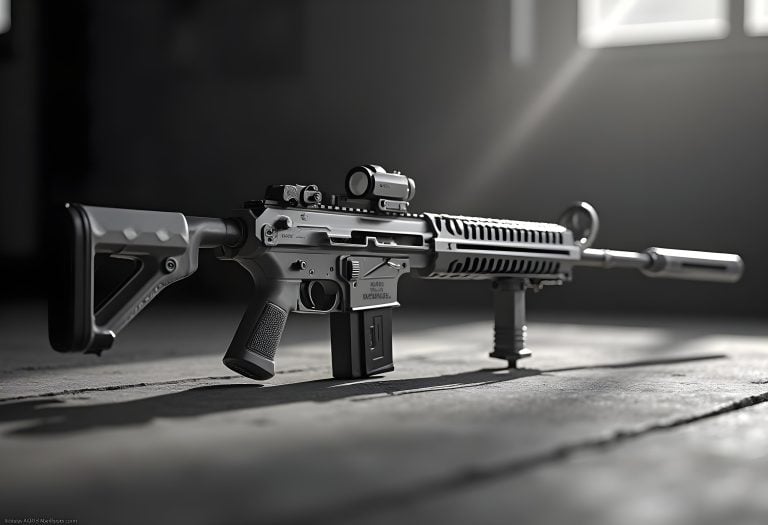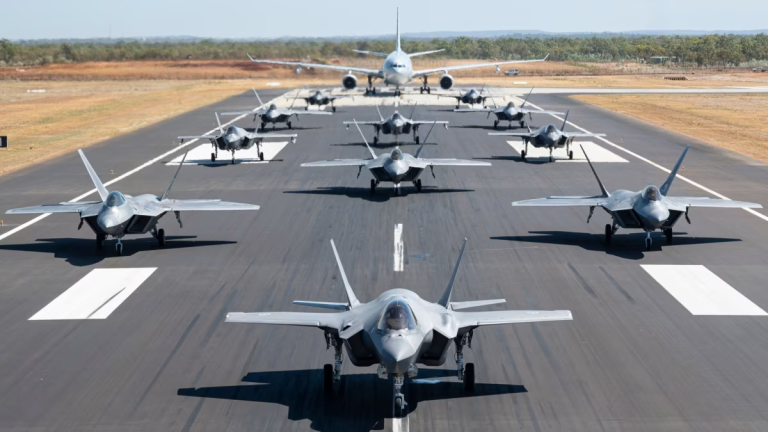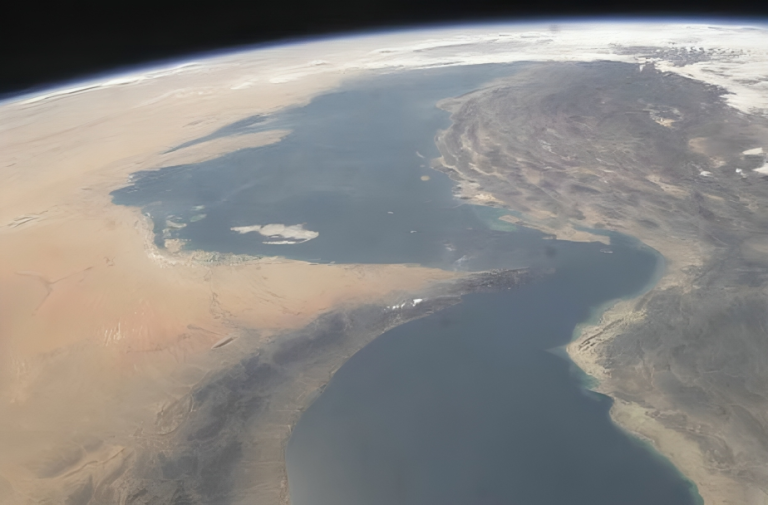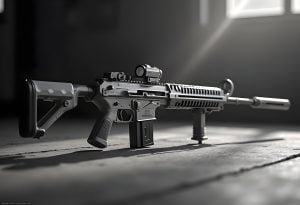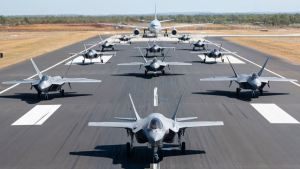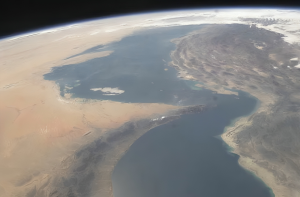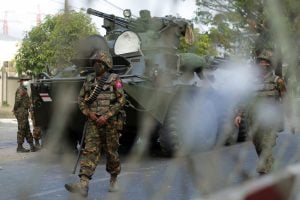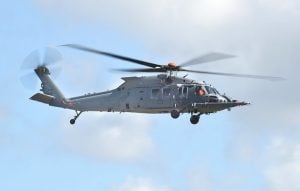The most powerful modern navies operate destroyers. These are the heaviest surface combatants in general use today. These ships are not numerous. Only the powerful navies around the world operate these warships. This analysis is based on the combined score of firepower, offensive and defensive capabilities, size, displacement, sensors, stealthiness, and some other features that are available in the public domain and only include destroyers that are currently in service or will be commissioned in the near future.
1. The Sejong the Great class destroyers are among the most advanced warships afloat today. They were developed under the KDX-III program, which sought to provide the South Korean Navy with a world-class destroyer capable of meeting virtually any threat at sea, on land, or in the air.
The design of these vessels was influenced by American Arleigh Burke-class destroyers and shares numerous common components and systems as well. Still, though these South Korean destroyers have largely original construction and composition. Moreover, with a combat displacement of some 11 000 tons (practically making these vessels cruisers), the Sejong the Great class destroyers are substantially heavier. South Korean Navy operates three of these warships.
Likely owing to the use of only fully-developed technologies and subsystems, the Sejong the Great class destroyers cost only $923 million per vessel. This price tag makes these vessels among the most inexpensive AEGIS warships ever constructed.
The weapons, sensors, fire controls, propulsion, and other systems are fully-automated, and networked together via the Aegis combat information system; the version currently used in the Sejong the Great class is Baseline 7 Phase 1. This system allows the ship to detect, identify, evaluate, and engage targets with no input from the crew, other than the decision to engage. The system can also display several-thousand contacts, and track and/or engage up to 100 targets simultaneously.
The missile battery of the Sejong the Great class is exceptional. Not even including the 21-cell RAM launcher, or even the 16 Hyunmoo III anti-ship missiles, they carry an incredible 128 missiles in three different vertical launch cell pads (one forward with 48 cells, one aft with 32 cells, and another 48-cell pad aft). This is a much larger stock of missiles than the 96 cells found on the Arleigh-Burke-class, furthermore, it is second-place to the Kirov class battlecruisers (which have the world’s largest missile battery, at 352 missiles).
The variety of missiles carried by the Sejong the Great class is staggering as well. These include the RIM-66M-5/SM-2ER Block IV Standard SSM-700K Haeseong with a range of 240 km, the Hyunmoo IIIB land-attack cruise missile with a range of 1 000 km, the SSM-700K Haeseong anti-ship missile with a range of 150 km, the Red Shark (also called the K-ASROC) anti-submarine missile with an 18.5 km range, and the RIM-116B RAM surface to air missile with a range of 7.4 km. The K745 Blue Shark torpedo has an effective range of 18.5 km. There are two hangars for helicopters. So the Sejong the Great class warships can be seen as the largest and most powerful destroyers.
2. The Arleigh Burke-class warships are the biggest destroyers currently in service with the US Navy. Also, these are some of the biggest destroyers in the world that incorporate highly advanced weaponry and systems.
These guided-missile destroyers entered service with the US Navy in 1991 were the first large US Navy vessel designed to incorporate stealth shaping techniques to reduce radar cross-section. Also, these were the first destroyers fitted with the Aegis combat system. These destroyers were intended to be cheaper, less capable vessels than the Ticonderoga Class cruisers. Originally tasked with defending against Soviet aircraft, missiles, and submarines, these potent general-purpose destroyers are now used in high-threat areas to conduct anti-air, anti-submarine, anti-surface, and land-attack operations.
This class currently consists of 62 destroyers in three versions, namely Flight I, Flight II, and Flight IIA. The laters Flight IIA vessels are sometimes referred to as the Oscar Austin class. These have a helicopter hangar for two helicopters, as well as an enlarged vertical launch system, a new 127 mm dual-purpose gun, and are packed with modern sensors and weaponry. These warships have a full load displacement of 9 648 tons and are significantly larger than original Flight I ships, that were commissioned in the early 1990s. Construction of a further improved Flight III variant is planned for 2016.
3. The Type 052D class is referred to as Chinese Aegis. It is known in the West as Luyang III class. The Type 052D destroyers are being built at a rapid pace for the Chinese Navy by two different shipyards. The first vessel entered service in 2014. In 2019 China built more of these destroyers in one year than some navies have in their entire inventory.
The Type 052D class is among the World’s biggest and most capable destroyers. It follows the lines of the previous Type 052C class, but is larger and has reduced radar cross-section. Also, the new warships have improved weaponry and pack a heavier punch. These guided-missile destroyers are equipped with advanced radar and two 32-cell Vertical Launch Systems (VLS) for various missiles. Still, though these are general-purpose destroyers, rather than specializes anti-air warfare vessels. It seems that these warships have capabilities similar to those of the US Arleigh Burke-class general-purpose destroyers.
It looks like the phased array radar of the Type 052D is a further development of the Type 052C radar. The new radar is larger and presumably has more transceivers. This radar was first observed in 2012 on a Bi Sheng weaponry trial ship. In function, it is similar to the US SPY-1 Aegis radar. It can detect air targets at significant ranges and track numerous targets simultaneously. Some sources report that the Type 052D class warships are also fitted with the newest Chinese data link. This secure tactical data system is used for communication with other naval assets.
The two 32-cell VLS can hold and launch different types of missiles. These include surface-to-air missiles, cruise missiles, anti-ship missiles, and anti-submarine missiles. The Type 052D class has superior offensive capabilities. In these terms, it even outperforms many Western destroyers.
Point defense is provided by an HHQ-10 launcher, packed with short-range air defense missiles. Last-ditch defense is provided by a seven-barreled 30 mm CIWS. It seems that starting with the 9th hull destroyers will be fitted with improved eleven-barreled 30 mm CIWS. It can fire at a rate of a whopping 10 000 rounds per minute. It is claimed that it can intercept incoming anti-ship missiles up to a speed of Mach 4 with a 96% success rate. So far these eleven-barreled CIWS were fitted on Chinese Liaoning aircraft carriers.
These Chinese destroyers have a single 130 mm main gun. For anti-submarine warfare, there are torpedo tubes and anti-submarine rocket launchers. The Type 052D class warships have a hangar for a single helicopter. These destroyers can accommodate a Kamov Ka-28 (export version of the Ka-27) or Harbin Z-9C. However, most other warships of similar size and displacement typically can accommodate two helicopters.
4. Even though the Indian Kolkata class destroyers might not be as advanced as contemporary Western or even Chinese warships, these pack a very formidable punch. Project 15A was launched in 1986, following the approval of the cabinet committee as a follow-on class to the Delhi class. As with most Indian military projects, the development and construction of these warships were plagued with setbacks, delays, and cost overruns. By the year 2000, the Kolkata class was redesigned by the Directorate of Naval Design including the modern stealth attributes. These destroyers have reduced radar cross-section, although these are by no means true stealthy vessels. The lead vessel was delayed by 4 years (to 2014) due to technical faults found out during the sea trials. However, the faults were rectified and INS Kolkata was finally commissioned in 2014. The Kolkata class comprises 3 ships namely – INS Kolkata, INS Kochi, INS Chennai. All 3 named on the coastal cities of India.
These warships a packed with a mix of indigenous, Russian, and Western sensors, equipment, and weapons. Weapon systems include BRAHMOS nuclear cruise missiles which can reach a speed of 2.8 Mach (3 457 km/h) and engage hostile ships or land targets. So these Indian destroyers have significant offensive capabilities. Also, there is an Indo-Israel jointly developed BARAK-8 missile defense system with a range of up to 90 km.
Other weapons include a single 76 mm dual-purpose gun and four AK-630 CIWS. Anti-submarine weapons include 533 mm torpedoes and anti-submarine rocket launchers. These vessels can house two helicopters, either HAL Dhruv or Westland Sea King.
5. The Atago class are large Japan’s destroyers with strong anti-air warfare capability. This class is a scaled-up and improved version of the Kongou class (a Japanese version of the US Arleigh Burke-class). Two Atago class ships are in service with Japan Maritime Self-Defense Force (JMSDF) and two more are being built.
The Atago class warships carry Aegis’s world-class air defense system. It integrates a mix of Japanese- and American-made systems, including weapons, radar, and fire control into one highly efficient system, capable of controlling a fleet battle above and below the surface. Furthermore, the Aegis system used on Atago class ships is more capable than that, used on the previous Kongou class.
The main role of the Atago class destroyers is to provide air defense for the fleet. These warships can even engage ballistic missiles. There is a 96-cell Mk.41 VLS with 64 cells in the forward area and 32 cells in the stern area. These are packed with a mix of SM-2MR Standard missiles, SM-3 anti-ballistic missiles, and RUM-139 ASROC anti-submarine missiles.
The same VLS could also pack Tomahawk anti-ship and land-attack cruise missiles. However, in line with Japan’s post-war constitution, the Atago class does not carry Tomahawk missiles. Instead, the anti-ship capability is provided by less capable Type 90 (SSM-1B) anti-ship missiles. These anti-ship missiles have a range of 150 km and carry a 225 kg warhead. In concept, these are similar to the US Harpoon, though it looks like these Japanese missiles are more advanced than the Harpoons. The Atago class can carry up to 8 of these missiles on two quadruple launchers.
So offensive capabilities of the Atago class warships are rather week, even compared with the Indian Kolkata class destroyers, which are much smaller. The Atago class has a 127 mm dual-purpose gun in a stealth-shaped mount. The gun is the same as in the previous Kongou class, its barrel has extended from 54 calibers to 62 calibers. It can handle strengthened powder charges and has a maximum range of 38 km. This gun can engage hostile ships, air targets, and bombard land targets.
Last-ditch defense against incoming anti-ship missiles is provided by two 20 mm Phalanx CIWS. One of them is located in the forward area, while another one is in the stern area. For anti-submarine warfare, there are 2 triple-tube torpedo launchers for Mk.46 Mod.5 Near tip or Japanese Type 73 torpedoes.
Hangar of the Atago class accommodates only a single SH-60K helicopter. Though most warships of similar size and displacement can accommodate two helicopters. These warships are operated by a crew of 300 sailors, including the aircrew, and can function as fleet command centers.
6. For much of the last four decades, the primary focus of the Japanese Maritime Self-Defence Force (JMSDF) has been on anti-air and anti-submarine warfare. During the 1980s and 1990s, the increasing threat from China, together with the reduction of the US military presence in the region, meant that Japan was forced to take a more active military role in Asian waters. To meet this new role a new Kongou class of guided-missile destroyers has been commissioned.
Based loosely upon the US Navy’s Arleigh Burke-class, the Kongous have been built to mercantile instead of warship standards. However, they are slightly bigger than the American ships and carry an improved lightweight version of the Aegis combat system. It integrates weapons, radar, and fire control into one highly efficient system, capable of controlling a fleet battle above and below the surface. Actually, the Kongou class destroyers are one of the largest destroyers in the world. In terms of size and displacement, these are nearly as large as cruisers.
The lead ship of the class, Kongou, was commissioned in 1993. It was followed by three more similar warships. The main external difference between these vessels and the Burkes is that the Kongous have a longer flush deck at the stern, making it easier to handle helicopters up to the size of the SH-60J Seahawk or larger. Though it looks like due to this improvement the Kongou class lost some of the Arleigh Burke class’s seakeeping.
The main role of these warships is fleet air defense. The Kongou class ships are an extremely important element in the protection of Japan. Their sophisticated long-range air defense capability is seen as a national asset beyond their duty to protect the fleet.
The main weapons of the Kongou class are two Mk.41 vertical launch systems with a total of 90 Standard SM-2MR surface-to-air missiles. There are two 20 mm Phalanx CIWS, that provide last-ditch protection against incoming anti-ship missiles. There is also a 127 mm dual-purpose rapid-fire cannon that can engage both surface and air targets, or bombard land targets.
Anti-ship capability is provided by 2 quadruple Harpoon missile launchers. However, the Kongou class lacks any significant land attack capabilities. Also, there are two triple launchers for Mk.46 Mod.5 Near tip anti-submarine torpedoes. Anti-submarine capability is also provided by an SH-60J helicopter. Further development of the Kongou class became the Atago class anti-air warfare destroyers. These are essentially scaled-up versions of the Kongou class.
7. The Japanese Aikizuki class of general-purpose destroyers are used as escorts for the Hyuga and Izumo class helicopter carriers. A total of 4 Aikizuki class ships were planned and were eventually completed. The lead ship was commissioned with the JMSDF in 2012. The last one was commissioned in 2014.
The Aikizuki class is based on the previous Takanami class destroyers. Their main role is to escort Hyuga class and Izumo class helicopter carriers, as well as Kongou class and Atago class Aegis destroyers, and to shield them from the air, surface, and underwater threats. The Aikizuki class ships pack more advanced equipment than their predecessors, including new sensors and sonar, and are slightly larger than the Takanami class vessels. Furthermore, the Aikizuki class has cleaner lines in order to reduce the radar cross-section. Other improvements include more powerful engines. Also, the Aikizuki class destroyers have an indigenous ATECS battle management system, which is being called the Japanese Aegis.
The Aikizuki class destroyers have an indigenous combat system, which includes AESA radar and fire control system. It is a derivative of the combat system, used on Hyuga class helicopter carriers, but has additional local area defense capability. Data is transferred among JMSDF ships by a secured Link 16 datalink.
The Aikizuki class guided-missile destroyers carry balanced armament, that provides protection airborne, surface, and underwater threats. There is a 32-cell Mk.41 VLS, packed with a mix of RIM-162 Evolved Sea Sparrow Missiles (ESSM) surface-to-air missiles and ASROC anti-submarine missiles. The lead ship, Aikizuki, is armed with RUM-139 ASROC missiles, while all later ships carry the Type 07, a Japanese equivalent of this missile.
Long-range anti-ship capability is provided by two quadruple launchers with Type 90 (SSM-1B) anti-ship cruise missiles. These anti-ship missiles have a range of 150 km and carry a 225 kg warhead. In concept, these are similar to the US Harpoon, though it looks like these Japanese missiles are more advanced than the Harpoons. The JMSDF actually replaces Harpoon missiles on its ships by their Type 90.
There is a 127 mm dual-purpose gun in a stealth-shaped mount. The gun is similar to that as used on the larger Atago class destroyers. It has an extended 62 calibers barrel and can handle strengthened powder charges. The gun has a maximum range of 38 km. It can engage hostile ships, air targets, and bombard land targets.
Last-ditch defense against incoming air threats is provided by two 20 mm Phalanx Block 1B CIWS. One of them is located in the forward area, while another is in the stern area. Anti-submarine capability is provided by two triple launchers for 324 mm torpedoes. These can launch Mk.46 Mod.5 Near tip or Japanese Type 73 torpedoes. Also, the Aikizuki class ships have an anti-torpedo system. There is a hangar for a single Mitsubishi SH-60K anti-submarine helicopter. It is mainly intended for anti-submarine duties. Some of the Aikizuki class systems, such as hull sonar, towed array sonar, electronic warfare suite, are comparable to those used on the Zumwalt class.
8. The Daring class enveloped from a joint Anglo-French-Italian project called ‘Project Horizon’. However, this initiative was beset with delays and arguments. The Royal Navy wanted a larger destroyer, which would operate in the Atlantic Ocean, could patrol large areas and provide air defense for the fleet. On the other hand, France and Italy desired smaller warships to operate in the Mediterranean region. In 1999, the Royal Navy withdrew from the joint project and commenced the development of the Type 45 class. Significant changes were made to the original project. The lead ship, HMS Daring, entered service in 2009. The last of 6 ships were commissioned in 2013. These are the largest surface combatants operated by the Royal Navy since World War II. Also, these are the most advanced warships of the Royal Navy.
The main role of the Daring class is to provide air defense for the fleet. Some of the class’s features include Principal Anti-Aircraft Missile System (PAAMS). The PAAMS incorporates 48-cell VLS with 32 Aster-30 missiles (80 km range) and 16 Aster-15 missiles (30 km range). The system can intercept super-agile missiles fitted with re-attack modes, together with the full envelope of current and anticipated air threats. Furthermore, the ship can engage missile threats operating either individually or in salvos. In addition to PAAMS, it is hoped that the Daring class will eventually deploy Tomahawk cruise missiles.
Anti-ship capability is provided by two quadruple Harpoon launchers. The ships feature a comprehensive suite of sensors. An S1850M radar provides wide-area, long-range search. This is reinforced by an MFS-7000 bow-mounted sonar. Air defense combat management is coordinated by the Sampson radar system, combining surveillance and tracking roles in a single system. This can detect and track hostile aircraft or missiles while providing guidance for the ship’s own weapons systems. This radar is more capable than the radars used on the Franco-Italian Horizon class destroyers.
The ship’s sensors are linked together by the combat management system, while communications with other vessels and satellite systems are facilitated through the fully-integrated communications system.
Ship protection is provided by the Surface Ship Torpedo Defense System. Furthermore, the ship can embark a complement of 60 Royal Marine Commandos with a supporting helicopter. The flight deck accommodates the Royal Navy’s Merlin helicopter, although initially, the ships operated with Lynx.
The Type 45 or Daring class features a revolutionary WR-21 advanced gas turbine engine. The engines feature an Integrated Electric Propulsion System, which eliminates the gearbox and increases fuel efficiency. The ship’s interior has been designed with ‘room for growth as a major consideration. While the ship’s complement includes around 190 crew, there is an option to increase this to 235. This permits the accommodation of specialist personnel, which allows for an increased range of missions, such as humanitarian relief, to be performed.
9. The Project Horizon started life in 1992 as a cooperative Anglo-Franco-Italian development. In Italy, it was known as Project Orizzonte, which translates as “horizon”. An international joint venture company was established in 1995 to produce the new warships. However, due to differing national requirements, this initiative was beset with delays and arguments. The Royal Navy wanted a larger destroyer, which would operate in the Atlantic Ocean, could patrol large areas and provide air defense for the fleet. On the other hand, France and Italy desired smaller and less capable warships to operate in the Mediterranean region. Also, there were workshare arguments. In 1999 the United Kingdom left the project and eventually developed its equivalent – the Daring class destroyers. France and Italy continued development on their own. In 2000 a contract was signed to jointly produce 4 ships, two for each country. Originally four more ships were planned, tow for each country. But eventually, these were never ordered.
Italy ordered Andrea Doria and Caio Duilio. The first one was commissioned in 2007. It reached full operational capability in 2008. The second ship followed in 2009. France ordered Forbin and Chevalier Paul. The first one was commissioned in 2008 and the second followed in 2009.
The Horizon class ships are officially referred to as frigates. However, considering their size and powerful armament these ships are clearly destroyers. These are called frigates purely for political reasons. These vessels have enhanced stealth features with significantly reduced radar cross-section and noise levels.
The main radar is the EMPAR phased array multi-purpose radar. It detects air targets and provides tracking for the missiles.
The Horizon class destroyers are fitted with a 48-cell VLS for a mix of Aster-15 (range 30 km) and Aster-30 (range 120 km) surface-to-air missiles.
Anti-ship capability comes from two quadruple launchers. French warships are armed with MM.40 Exocet anti-ship missiles, while Italian warships carry OTOMAT Teseo Mk.2A anti-ship missiles. These have a range of 180 km and carry a 210 kg warhead.
The French Horizon class warships are armed with two OTO Melara 76 mm Super Rapid guns. These rapid-firing dual-purpose guns can engage both surface and air targets and even act as CIWS. On French ships, last-ditch defense is provided by a SADRAL launcher with six Mistral short-range surface-to-air missiles. Also, there are two 20 mm automatic cannons for engaging small surface targets.
On the other hand, Italian warships are armed with three 76 mm rapid-firing guns. Also, there are two Oerlikon 25 mm cannons for engaging small surface targets. These destroyers are armed with 2 twin launchers for MU90 lightweight torpedoes. For defense against incoming torpedoes, there are 2 launchers with a SLAT anti-torpedo system. The Horizon class destroyers can accommodate a single helicopter. It can be NH90 HFH or AW101. It can be used for long-range anti-submarine warfare, search and rescue, utility, and other roles. Aviation facilities include a flight deck and hangar.
10. China’s Type 052C class (Western reporting name Luyang II class) destroyers were the first Chinese warships fitted with modern phased array radar. A total of 6 destroyers of this class were built and are currently in active service. The lead ship was commissioned in 2004. These warships have reduced radar cross-section, although these are not stealthy vessels.
The Type 052C class has a 48-cell vertical launch system for HHQ-9 long-range surface-to-air missiles. These missiles have a range of 102 km. Also, there are 8 YJ-62 anti-ship missiles carried in canister launchers. These missiles have a range of 280 km.
These warships introduced a Type 346 active electronically scanned array radar, which is similar in function to a US SPY-1 Aegis radar. It detects and tracks air targets at significant ranges. Furthermore, it provides fire control for HHQ-9 missiles. Other weapons include a 100 mm gun, two 30 mm CIWS, and 324 mm tubes for anti-submarine torpedoes.
This class of destroyers has a hangar and landing spot for a single Ka-28 or Z-9 anti-submarine warfare helicopter. Eventually, the Type 052C was succeeded by an improved Type 052D class.
ALSO READ:
- 10 Best Sub Machine Guns In The World
- Top 5 Intercontinental Ballistic Missiles
- World’s Top 5 Biggest Submarines
- The Most Powerful Aircraft Carriers Across The Globe
You can prepare for defence entrance exams such as NDA, AFCAT, INET, and CDS by taking Written Online courses as they will not only give you access to full-length quality lectures but will also provide the facility to take standardized mock tests for better study and strategic growth in the exam. You can take multiple quizzes after each lesson to ensure the full understanding of the subject along with creating your customized lesson plans. You can check out the course content along with other important specifics at SSBCrack exams.
You can also access them through the SSBCrack Exams app available in the google play store.
Jai Hind


